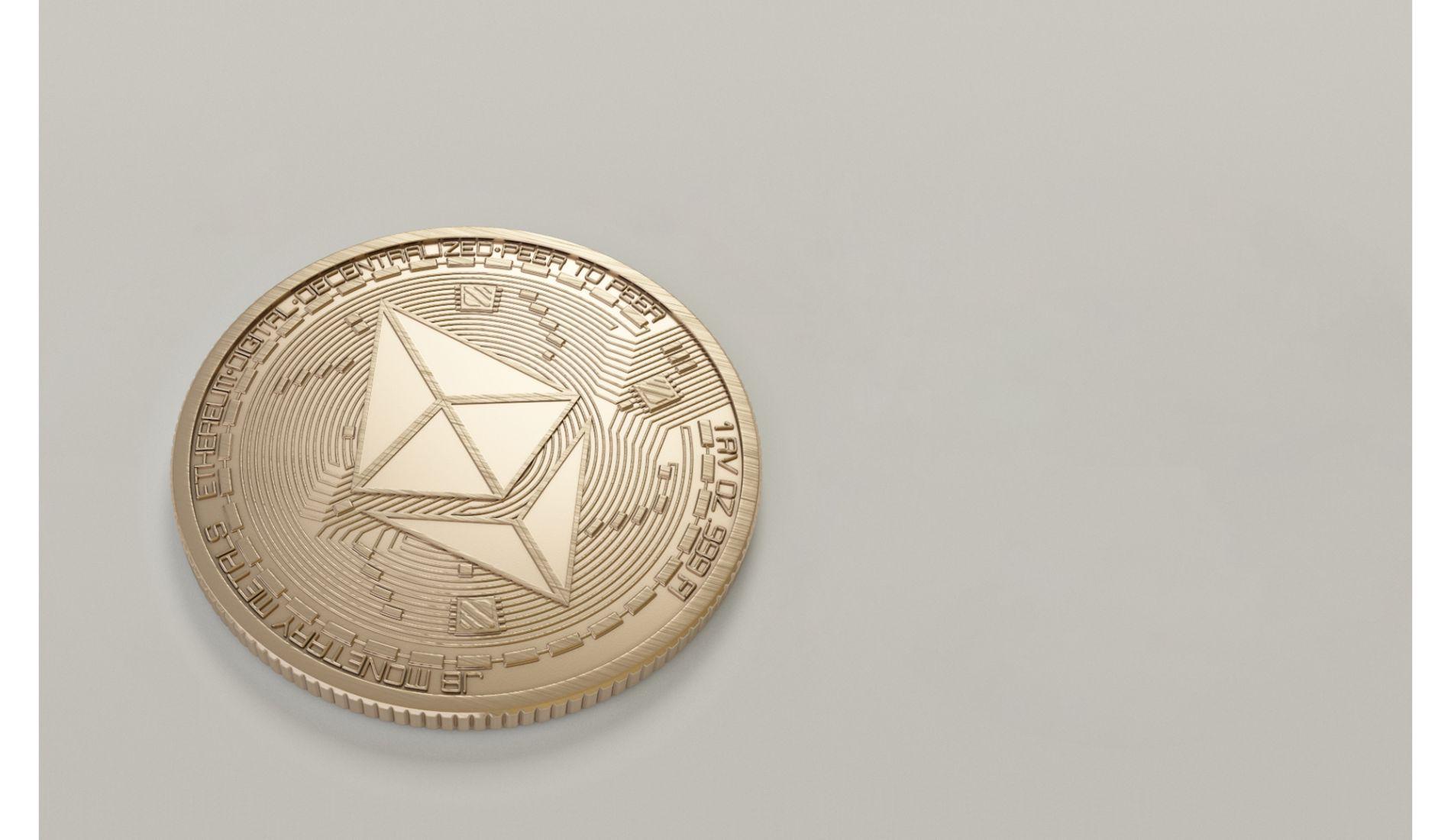Amazing Ways Layer 2 Protocols Are Paving The Way For Scalable Ethereum Applications
Ethereum, the pioneer of smart contracts, has revolutionized numerous industries. However, its popularity has exposed a critical limitation: scalability. The Ethereum network struggles to handle a high volume of transactions, leading to congestion, slow processing times, and exorbitant gas fees. This has hindered Ethereum’s ability to reach its full potential and fueled the rise of layer 2 scaling solutions.
This article dives into the world of layer 2 protocols, exploring their functionalities, benefits, and potential to address Ethereum’s scalability challenges. We will also analyze the different types of layer 2 solutions and their unique approaches to scaling the Ethereum ecosystem.
Unveiling the Bottleneck: Understanding Ethereum’s Scalability Issues
Ethereum’s scalability limitations stem from its reliance on a single-chain architecture. All transactions are processed sequentially on the main chain, leading to bottlenecks when transaction volume surges. This results in:
- High Gas Fees: Users compete for limited block space, driving up gas fees to incentivize miners to prioritize their transactions. This can make simple interactions on the Ethereum network prohibitively expensive.
- Slow Transaction Processing Times: With a congested network, transaction confirmation times can become lengthy, hindering the user experience for applications built on Ethereum.
- Limited Adoption Potential: The combination of high fees and slow processing times discourages developers from building on Ethereum and hinders mass adoption of blockchain technology.
These challenges spurred the development of layer 2 scaling solutions.
Scaling Up, Not Out: The Essence of Layer 2 Protocols
Layer 2 protocols act as complementary layers built on top of the Ethereum blockchain. They “bundle” transactions off-chain, process them efficiently, and then submit the final results back to the main chain for settlement. This approach significantly increases the network’s overall transaction throughput without modifying the core Ethereum protocol.
Here are some key benefits of layer 2 solutions:
- Increased Scalability: By processing transactions off-chain, layer 2 protocols can handle a much higher volume of transactions, significantly reducing congestion on the main chain.
- Lower Gas Fees: With reduced network congestion, gas fees associated with transactions on layer 2 solutions are typically much lower compared to the Ethereum main chain.
- Faster Transaction Speeds: Layer 2 protocols can process transactions significantly faster than the Ethereum main chain, offering a more responsive user experience.
These benefits hold immense promise for the growth and long-term sustainability of the Ethereum ecosystem.
Also, read – Top 10 Ways Of Making Ethereum Layer 2 Solutions Surprisingly Cost Effective
Layer 2: The Unsung Hero Paving the Way for Scalable Ethereum Applications

Enter Layer 2 protocols – ingenious solutions emerging as the answer to Ethereum’s scalability woes. These protocols operate on top of the Ethereum blockchain, acting as an additional layer that takes the burden off the main network. Let’s delve into the amazing ways Layer 2 protocols are paving the way for a future of scalable Ethereum applications:
1. Enhanced Transaction Throughput: Traditional blockchains like Ethereum process transactions one by one, creating a bottleneck. Layer 2 protocols break free from this limitation. They employ various techniques to bundle multiple transactions together, significantly increasing the network’s capacity to handle transactions per second (TPS). This translates to faster processing times for users and smoother operation of dApps.
2. Drastically Reduced Gas Fees: High gas fees have been a major barrier to entry for many users on the Ethereum network. Layer 2 protocols come to the rescue by processing transactions off-chain. This reduces the strain on the mainnet, leading to significantly lower gas fees compared to Layer 1 transactions. This opens the door for a wider range of users and developers to participate in the Ethereum ecosystem.
3. Improved User Experience: Slower transaction processing times and high gas fees can lead to a frustrating user experience. Layer 2 protocols address this by enabling faster and more affordable transactions. Users can interact with dApps seamlessly, without encountering delays or exorbitant costs. This paves the way for a more user-friendly and accessible blockchain experience.
4. Security Inherited from Ethereum: One of the biggest advantages of Layer 2 solutions is their security model. Many Layer 2 protocols leverage the security of the Ethereum blockchain. They periodically submit batches of transactions to the mainnet for verification, ensuring the same level of security as Ethereum itself. This gives developers and users peace of mind when building and interacting with dApps on Layer 2.
5. A Spectrum of Scaling Solutions: The beauty of Layer 2 lies in its diversity. There’s not a one-size-fits-all solution. Different Layer 2 protocols employ various techniques to achieve scalability, each with its own advantages and trade-offs. This allows developers to choose the Layer 2 solution that best suits the specific needs of their dApp.
Some prominent examples of Layer 2 protocols include Optimism, Arbitrum, and Polygon. Each offers unique features and functionalities, catering to a wide range of dApp development needs.
The Future is Scalable:
Layer 2 protocols are revolutionizing the Ethereum landscape. By addressing scalability challenges, they are opening doors for the development and adoption of next-generation dApps. With faster transaction processing, lower fees, and a more secure environment, Layer 2 paves the way for a future where Ethereum can truly fulfill its potential as a platform for decentralized applications.
This is just a glimpse into the exciting world of Layer 2 solutions. As the technology continues to evolve, we can expect even more innovative protocols to emerge, further shaping the future of scalable blockchain applications.
A Spectrum of Solutions: Different Types of Layer 2 Protocols

As mentioned earlier, the beauty of Layer 2 lies in its diverse range of solutions. There’s no single approach to scaling Ethereum, and different Layer 2 protocols cater to specific needs. Here’s a breakdown of some of the major categories of Layer 2 protocols:
1. Rollups:
- Concept: Rollups bundle multiple transactions off-chain, process them together, and submit a compressed batch of data (proof) back to the Ethereum mainnet for verification. This significantly reduces the computational burden on the main chain, enabling faster transaction processing and lower gas fees.
- Types: There are two main types of rollups:
- Optimistic Rollups: These assume transactions are valid by default. If there’s a dispute, users can submit a “fraud proof” to the mainnet for settlement, adding a slight delay but keeping fees low. Optimism is a popular example of an Optimistic Rollup.
- Zero-Knowledge Rollups (ZK-Rollups): These employ cryptographic proofs to verify the validity of transactions off-chain without revealing the actual data. This allows for very fast transaction processing and low fees, but ZK-Rollups are still under development and may have higher computational requirements for verification. Loopring is an example of a ZK-Rollup.
2. Plasma:
- Concept: Plasma is a framework for creating sidechains that are secured by the Ethereum mainnet. These sidechains operate independently with their own rules and validators. Transactions are periodically committed to the mainnet, ensuring security.
- Advantages: Plasma offers high scalability and flexibility for developers. However, it can be more complex to implement and secure compared to rollups. Polygon, a popular Layer 2 solution, utilizes Plasma chains for scalability.
3. Validium:
- Concept: Similar to rollups, Validiums bundle transactions off-chain and submit proofs to the mainnet for verification. However, unlike rollups, Validiums don’t handle any disputes themselves. All disputes are resolved on the mainnet, potentially leading to higher costs for dispute resolution but offering strong security guarantees.
4. State Channels:
- Concept: State channels create a direct payment channel between two parties. Transactions are conducted off-chain, and only the final state of the channel is periodically submitted to the mainnet for verification. This is ideal for micropayments and fast, frequent transactions between specific users. However, state channels are limited to two-party interactions and require additional setup for each channel.
Choosing the Right Layer 2:
The choice of Layer 2 protocol depends on the specific needs of the dApp. Here are some factors to consider:
- Transaction frequency: For applications with high transaction volume, rollups or Validiums might be ideal.
- Security requirements: ZK-Rollups offer the highest level of security within Layer 2 solutions.
- Development complexity: Rollups are generally easier to develop for compared to Plasma chains.
- Cost-effectiveness: All Layer 2 solutions offer lower fees than Layer 1, but fees can vary between protocols.
By understanding the different types of Layer 2 protocols and their trade-offs, developers can leverage the most suitable solution to build efficient, scalable, and user-friendly dApps on the Ethereum blockchain.
The Road Ahead: Challenges and the Future of Layer 2
While Layer 2 protocols offer a compelling solution to Ethereum’s scalability woes, they are not without their challenges. Here’s a look at some of the hurdles Layer 2 needs to overcome to reach its full potential:
1. Security Considerations:
- Inheriting Risk: Although Layer 2 protocols leverage Ethereum’s security for verification, their own security models are still under development. A security breach on a specific Layer 2 protocol could potentially impact the funds and applications built on it.
2. Interoperability:
- Fragmented Ecosystem: Currently, different Layer 2 protocols operate in silos. Seamless communication and asset transfer between them is limited. This fractured ecosystem can be inconvenient for users and hinder the overall growth of the decentralized finance (DeFi) space.
3. User Experience:
- Managing Multiple Chains: With a diverse landscape of Layer 2 solutions, users might need to manage accounts and assets across different chains. This can add complexity for beginners and hinder mainstream adoption.
4. Decentralization vs. Scalability:
- Centralized Sequencers: Some Layer 2 protocols rely on centralized sequencers to process transactions off-chain. This introduces a degree of centralization, which goes against the core principles of blockchain technology.
The Future is Bright:
Despite these challenges, the future of Layer 2 is bright. Here’s what we can expect in the coming years:
- Enhanced Security: As Layer 2 protocols mature, their security models will become more robust, mitigating potential risks.
- Interoperability Solutions: Developers are actively working on bridges and interoperable communication protocols to allow seamless interaction between different Layer 2 solutions.
- Improved User Experience: User interfaces and wallets will be designed to simplify managing assets and interacting with dApps across various Layer 2 protocols.
- Decentralized Sequencers: Research is ongoing towards developing more decentralized sequencer solutions for Layer 2 protocols, upholding the core values of blockchain technology.
Layer 2 protocols are constantly evolving, and innovation in this space is rapid. By addressing these challenges and leveraging their strengths, Layer 2 has the potential to unlock the true potential of Ethereum and pave the way for a future filled with scalable, secure, and user-friendly decentralized applications.
Conclusion: A Collaborative Effort
The scalability limitations of Ethereum have threatened to hinder the widespread adoption of blockchain technology. However, Layer 2 protocols have emerged as a beacon of hope, offering a path towards a scalable and thriving blockchain future.
Layer 2’s diverse range of solutions caters to various needs, from enabling faster transaction processing and lower fees to inheriting the security of the Ethereum mainnet. This empowers developers to build innovative and user-friendly dApps that can reach a wider audience.
The road ahead for Layer 2 is not without its challenges. Security considerations, interoperability issues, and the balance between decentralization and scalability need to be addressed. However, the collaborative efforts of developers, researchers, and the blockchain community are paving the way for advancements in these areas.
As Layer 2 protocols mature and overcome these hurdles, we can expect a future where:
- Scalable dApps flourish on the Ethereum blockchain, revolutionizing various industries.
- Users enjoy a seamless and cost-effective experience interacting with decentralized applications.
- The core principles of blockchain technology, such as security and decentralization, are upheld within the Layer 2 ecosystem.
The success of Layer 2 relies on a collaborative effort. Developers need to continue innovating and building robust solutions. Researchers must work on enhancing security and interoperability. The broader blockchain community plays a vital role in testing, adopting, and providing feedback on these evolving protocols.
By working together, we can unlock the true potential of Layer 2 and usher in a new era of scalable, secure, and accessible blockchain applications. Layer 2 is not just a technological advancement; it’s a collaborative effort to build a future where the promise of blockchain technology can be fully realized.
Stay informed with daily updates from Blockchain Magazine on Google News. Click here to follow us and mark as favorite: [Blockchain Magazine on Google News].
Get Blockchain Insights In Inbox
Stay ahead of the curve with expert analysis and market updates.
latest from tech
Disclaimer: Any post shared by a third-party agency are sponsored and Blockchain Magazine has no views on any such posts. The views and opinions expressed in this post are those of the clients and do not necessarily reflect the official policy or position of Blockchain Magazine. The information provided in this post is for informational purposes only and should not be considered as financial, investment, or professional advice. Blockchain Magazine does not endorse or promote any specific products, services, or companies mentioned in this posts. Readers are encouraged to conduct their own research and consult with a qualified professional before making any financial decisions.

 Bitcoin
Bitcoin  Ethereum
Ethereum  Tether
Tether  XRP
XRP  Solana
Solana  Dogecoin
Dogecoin  USDC
USDC  Cardano
Cardano  Lido Staked Ether
Lido Staked Ether  TRON
TRON  Avalanche
Avalanche  Sui
Sui  Wrapped stETH
Wrapped stETH  Chainlink
Chainlink  Toncoin
Toncoin  Shiba Inu
Shiba Inu  Stellar
Stellar  Wrapped Bitcoin
Wrapped Bitcoin  Hedera
Hedera  Polkadot
Polkadot  WETH
WETH  Bitcoin Cash
Bitcoin Cash  Uniswap
Uniswap  Pepe
Pepe  Hyperliquid
Hyperliquid  LEO Token
LEO Token  Litecoin
Litecoin  Wrapped eETH
Wrapped eETH  NEAR Protocol
NEAR Protocol  Ethena USDe
Ethena USDe  USDS
USDS  Internet Computer
Internet Computer  Aptos
Aptos  Aave
Aave  Mantle
Mantle  Bittensor
Bittensor  Virtuals Protocol
Virtuals Protocol  Cronos
Cronos  POL (ex-MATIC)
POL (ex-MATIC)  Ethereum Classic
Ethereum Classic  Render
Render  Artificial Superintelligence Alliance
Artificial Superintelligence Alliance  MANTRA
MANTRA  Arbitrum
Arbitrum  Ethena
Ethena  Tokenize Xchange
Tokenize Xchange  WhiteBIT Coin
WhiteBIT Coin 



